Complete Guide to Cabernet Sauvignon Wine | Wine 101
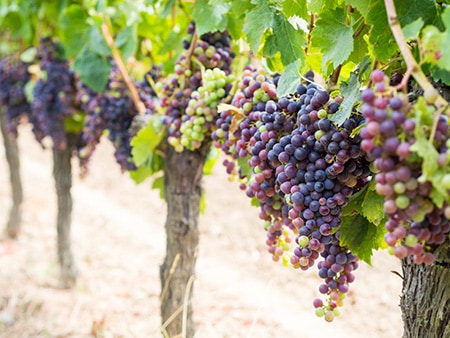
Cabernet Sauvignon is the world's favorite red wine, produced in nearly every major wine-producing country.
It also has a surprising origin, created by accident in Bordeaux when Cabernet Franc plantations met Sauvignon Blanc.
However, while the Cabernet Sauvignon grape is a happy accident, we have centuries of winemaking and exports to thank for the delectable global wines we enjoy today. Only with time has the grape flourished in every climate.
We adore Cabernet Sauvignon's versatility, with young and aged wines offering different tasting experiences.
This complete guide to Cabernet Sauvignon covers everything you need to know, including its origins, tasting notes, notable regions, and some fun facts to impress your friends with too!
Characteristics of Cabernet Sauvignon
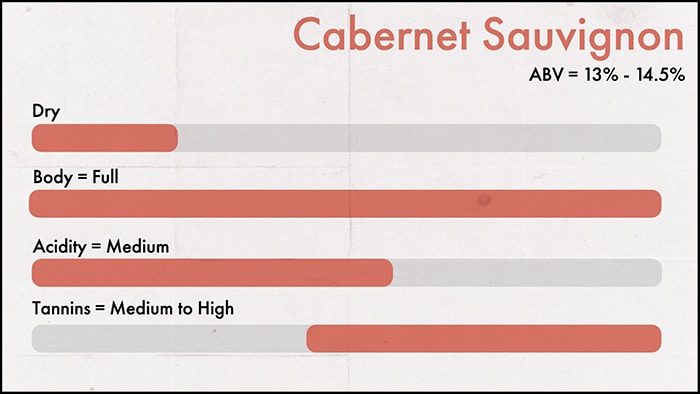
The main characteristics of Cabernet Sauvignon are high tannins and acidity. The wine is dry and full-bodied, with dark fruit flavors and wood and vanilla with age. It lures you in with a deep ruby color - a sign of the high tannins.
Notes of oak, tobacco, vanilla, and chocolate are common with aging, with the grape taking well to oak casks, which tone down the tannins. Aged Cabernet Sauvignon is smooth, with a lush mouthfeel and a lingering, oaky finish.
The nose is an exciting combination of black fruit, violet, and green bell pepper, with the bell pepper adding a dose of bright fruitiness.
You can expect an alcohol content of 13 - 14.5% ABV and medium to high acidity, with higher acidity and tannins prevalent in younger varieties.
Cabernet Sauvignon Tasting Notes
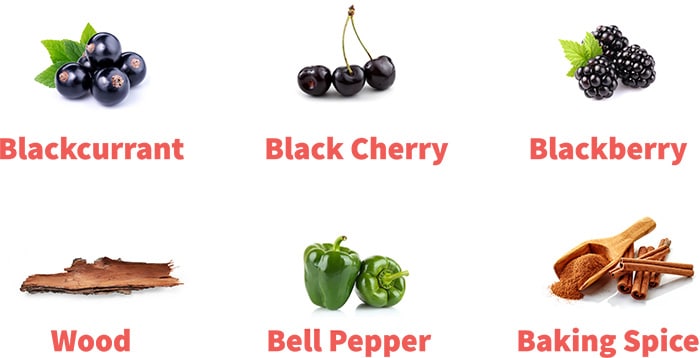
Cabernet Sauvignon has traveled the globe with plantations in cool and warm climates with different regional tasting notes.
Generally, the finest Cabernet Sauvignon is grown in warm regions like the sunny Napa Valley and the continental climate of Bordeaux.
Warm climate Cabernet Sauvignon is intensely fruity, with dark red fruit flavors of plum, black cherry, blackberry, and red cherry. Hints of chocolate and licorice suggest a soil high in minerals, such as the gravel soils of Bordeaux.
Cabernet Sauvignon from cool regions is usually more herbal and medium-bodied. Although less desirable from a purist's perspective, vegetal notes of green bell pepper and fresh herbs give it an earthy quality, perfect for pairing with fatty fish.
Aging transforms Cabernet Sauvignon, softening the tannins and mellowing the acidity for a smooth texture. It also brings out leather, tobacco, and cigar box notes after only a few years, adding a rich depth to the flavor.
Related: How does Cabernet Sauvignon compare to a similar dry red like Malbec?



How is Cabernet Sauvignon Served?
Cabernet Sauvignon benefits from a one-hour decant time to let the wine breathe and become more vibrant. At the very least, you should give it 20 minutes in the bottle after popping the cork so that it aerates.
Decanting Cabernet Sauvignon softens the tannins and rounds out hard edges, making it more approachable and less harsh.
Traditionally, Cabernet Sauvignon is served in a large wine glass because the larger bowl improves aeration, helping express the wine's acidity and aromas. However, a standard wine glass is just fine.
The ideal serving temperature is 60–68°F / 15-20°C – room temperature. For storing, you should set the thermostat to 52°F (11°C).
The Cabernet Sauvignon Grape
The Cabernet Sauvignon grape proves that not all accidents are bad.
Cabernet Sauvignon is a cross between the red Cabernet Franc and white Sauvignon Blanc grapes, created entirely by accident in the 1600s when the two grapes met on the hillside vineyards of Bordeaux, France.
You can only imagine the excitement of the first winemakers to vinify Cabernet Sauvignon after it seemingly popped into existence!
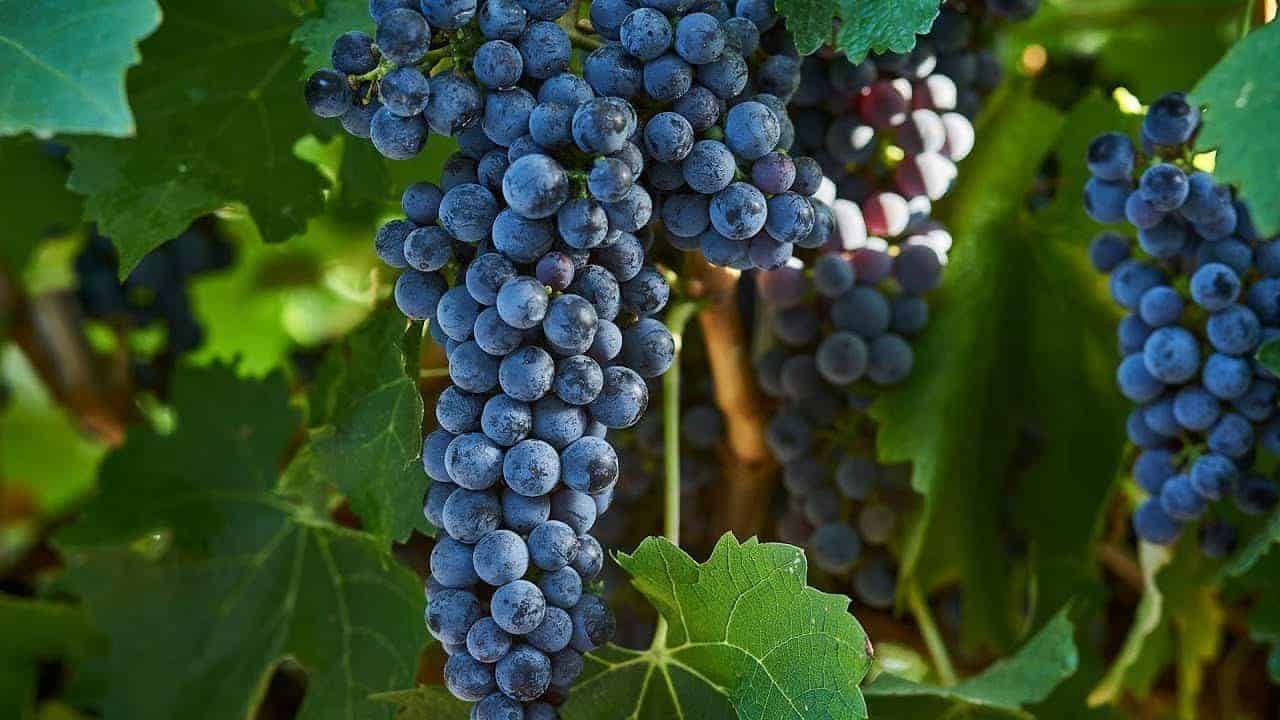
The grape's popularity grew in France over the centuries and made its way to other countries in the 1800s. Winemakers quickly realized that Cabernet Sauvignon flourishes in warm and cool climates, making it highly versatile.
Although Cabernet Sauvignon originates from France, today, it is grown globally, from Chile to Bordeaux and western Australia. It is the most planted wine grape in the world, with over 340,000 hectares spread across over ten countries.
It's also a popular blending grape with it being a staple in Bordeaux blends and also famous wines like Antinori Tignanello where it's blended alongside Sangiovese and Cabernet Franc grapes.
Notable Regions for Cabernet Sauvignon
Cabernet Sauvignon is now grown worldwide, but there are a few regions that stand out from the crowd.
Bordeaux, France
Bordeaux is the birthplace of Cabernet Sauvignon, with prominent vineyards in Entre-Deux-Mers, Graves, and Pessac-Léognan.
The Mediterranean maritime climate of Bordeaux is influenced by the Atlantic Ocean, which cools the air and prevents vineyards from becoming too hot, helping retain acidity in the grapes.
California, USA
Cabernet Sauvignon is the dominant grape in California, with plantations in Napa County, San Luis Obispo County, Sonoma County, and Lodi/San Joaquin County.
Sunny, warm, and not too hot, these regions offer the perfect conditions for the grape. Californian Cabernet Sauvignon is fruitier and less acidic than Bordeaux varieties.
Chile
Chilean Cabernet Sauvignon offers attractive candied fruit and jam flavors with a massive tannin kick.
Chile also produces beautiful Cabernet blends. The region of Aconcagua is most famous for Cabernet Sauvignon, but Maipo and Cachapoal also produce elegant and highly aromatic varieties worthy of your dinner table.
Australia (South)
Australia is one of the world's leading producers of Cabernet Sauvignon. Coonawarra and Margaret River are the leading Cabernet regions, with Coonawarra in the Limestone Coast zone famous for its aged reds.
Australian Cabernet is big on minerality and herbs, and it is a favorite for Cabernet blends with Merlot and Petit Verdot.
Cabernet Sauvignon Food Pairings
Cabernet Sauvignon is a highly versatile pairing for red meat and stinky cheeses, and it works incredibly well with hearty dishes.
We love pairing Cabernet Sauvignon with prime rib, ribeye, sirloin, roast beef, venison stew, oxtail, roast lamb, duck, and veal.
Ideal vegetarian/vegan pairings include mushroom ragu lasagna, veggie burgers, grilled vegetables, artichokes, and pasta in red sauce.
Garlic, rosemary, mint, and porcini (dried mushrooms) are ideal seasonings, bringing out the earthiness in Cabernet without overpowering the fruit.
Blue cheese like Roquefort pairs excellently with Cabernet Sauvignon, or you can pair it with a soft, gooey cheese like baked Camembert.
3 Awesome Cabernet Sauvignon Wines to Try
These great wines represent both a range of different price points and winemaking regions.
1. Under $15 - Santa Carolina Reserva 2018

Santa Carolina Reserva 2018 is an elegant Cabernet from Colchagua Valley, Chile. It's bold and tannic with moderate acidity, prominent blackcurrant and cassis flavors, and an undertone of oak and dark chocolate.
Founded in 1975, Santa Carolina is one of Chile's oldest wineries, renowned for producing world-class wines. Their Reserva won the gold medal at Exposition Universelle in Paris in 1889 – a time when Bordeaux was supreme.
On the nose, this delectable Cabernet treats you with blackberry, blackcurrant, and plum, with flavors of dark fruit, oak, cocoa, and tobacco on the palate. Try pairing it with prime rib, roast beef, and grilled vegetables.
For more amazing cab for less then $15, don't miss our buying guide.
2. Under $30 - Vasse Felix Filius 2019
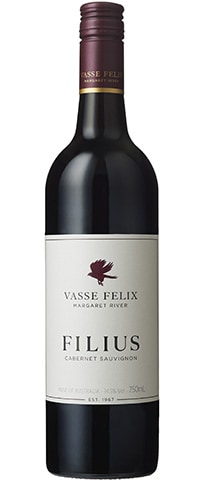
You won't find a more exciting Cabernet for less than $30. Vasse Felix Filius is from the Margaret River in Australia, with prominent notes of mulberry, plum, and black cherry for a rich, intense flavor profile.
Vasse Felix was founded in 1967 by Dr. Tom Cullity as the Margaret River's first winery, paving the way for one of Australia's most significant wine growing regions. The winery won Best New World Winery of the Year with Wine Enthusiast in its 18th annual Wine Star Awards.
Spin the top, and pour it into a glass, and this wine has a powerful nose of dark berry fruits, plum jam, black tea, and mulberry. It adds a dose of dusty earth and wood to the palate, giving it a complex, rich profile. The finish is long and fruit-forward.
3. Under $100 - Beaulieu Vineyard Rutherford Reserve 2018
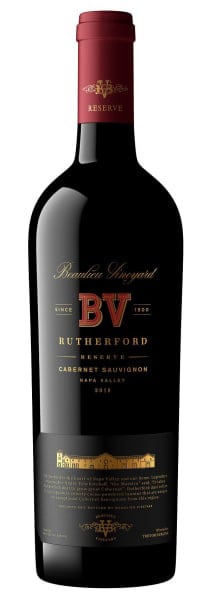
When special occasions call for the best, Beaulieu Vineyard Rutherford Reserve 2018 delivers. This rich, luxurious Cabernet is chocolatey, with exuberant berry fruits and a full, lush mouthfeel that coats the palate.
Founded in 1990 by Bordeaux-born Georges de Latour, The Beaulieu Vineyard is a Californian winemaker. They use the finest grapes of the vintage to produce some of the finest wines out of Napa County.
Notes of blackberry, plum, black cherry, cassis, and chocolate dominate the nose, with the palate adding a welcome dose of raspberry. Fresh yet rich, this Cabernet goes down a treat with blue cheese, mushroom dishes, and steak.
For more exquisite recommendations, don't miss our guide to the best cab in the world!
3 Interesting Facts About Cabernet Sauvignon
Cabernet Sauvignon is interesting because chance created it. If it wasn't for the plucky wine producers of 1600s Bordeaux who decided it would be a great idea to grow two grape varieties from the same family on the same hills, we wouldn't have it today.
Here are our three favorite facts about Cabernet Sauvignon:
1. Cabernet Sauvignon is the most planted wine grape in the world.
Cabernet is grown worldwide with vineyards in Chile, France, Italy, South Africa, Spain, New Zealand, Australia, and the USA. France is the world's largest producer, growing over 55,000 hectares across the Bordeaux region.
2. Cabernet Sauvignon has a half-sibling – Merlot!
Cabernet Sauvignon and Merlot are distinct but share a similar fruity profile. This is because they are half-siblings - Merlot is a cross of Cabernet Franc and a Magdeleine Noire des Charentes, while Cabernet Sauvignon is a cross of Cabernet Franc and Sauvignon Blanc.
3. Cabernet Sauvignon is a crossed grape, not a hybrid!
Cabernet Sauvignon is a crossed grape variety. The difference is that crossed grapes are from two varieties of the same species (Vitis vinifera), while hybrids are from two different species (Vitis vinifera and Vitis labrusca or Vitis Riparia).
